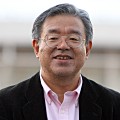
The Future of Digital Infrastructure and WIDE Project’s New Mission
Since its inception in 1988, WIDE Project has contributed to the development and spread of Internet technology. 2025 is set to be a year of significant change in the environment surrounding digital infrastructure, bringing new challenges and opportunities. Here, I provide an overview of the current state and challenges of digital infrastructure and discuss a new mission that WIDE Project should undertake in 2025.
Digital infrastructure is composed of three key elements—computers, digital data, and the Internet—along with the electricity that supports them. In our modern society, all critical infrastructure is now underpinned by digital technology, and when you consider the sustainability of that infrastructure, it’s clear we need to view it along with electricity as an amalgamated whole under the broader concept of digital infrastructure.
Cybersecurity
WIDE Project has long been involved in Internet restoration efforts in the wake of earthquakes and other disasters as well as the development of technologies for such situations. Keeping the Internet in operation and restoring it from disruptions is an important aspect not only of dealing with cyberattacks but within the scope of cybersecurity as a whole. In 2025, Japan will set up a new national framework for cybersecurity. WIDE Project has been helping to enhance the security of infrastructure overall through accumulated operational expertise providing the ability to disseminate technology and ensure sustainability and resiliency and through the security of technologies such as darknets and DNS.
AI
The rapid rise of expectations for and advancements in AI puts new demands on digital infrastructure as a whole, with people expecting computing, data distribution, and networking technologies to evolve to meet the demands of AI. In this sense, I think we should once again put forward WIDE’s vision for computer architecture as an autonomous distributed system as a new framework optimized for AI. WIDE Project researchers and engineers are actively contributing to data center decentralization and the design of computing systems within data centers. The rapid rise in demand for AI learning and inference systems in society is transforming them into new components of the Internet implemented through data centers, devices, and the like functioning as autonomous distributed processing systems.
Robotics
The IoT chips and devices emerging from efforts to develop RFID technology, an area in which WIDE Project has been involved, have evolved into autonomous robotic systems equipped with ample computing capabilities and memory. With the completeness of geographic coverage provided by NTN (non-terrestrial networks) and mobile technologies alongside advances in drones and autonomous vehicles, a new system environment is being built in 2025. The autonomous distributed system architecture supporting this requires a new service framework based on sensor data. Since the launch of its Internet Car research and development project in 1995, WIDE Project has contributed to technological advancements and standardization in this field. We can expect Japan’s renowned robotics culture and talent for robotics to fuel further contributions in this field.
Submarine cables
WIDE Project has connected universities across Southeast Asia through initiatives such as AI3 and SOI Asia, and has now launched a new project as part of ARENA-PAC. Over five years starting in 2025, a plan will be put in motion to deepen collaboration with submarine cables planned for the Asia-Pacific region and the Arctic Ocean and interconnect RENs (Research and Education Networks) across countries linking not only the Asia-Pacific but the EU, the Americas, and South America as well. Connections with RENs in Guam, Indonesia, the Philippines, Singapore, and Malaysia, as well as in Timor-Leste and Myanmar, are planned. These efforts will not only enhance university research and educational collaboration but also help bridge the digital divide in the Asia-Pacific region.
The Future of WIDE Project
Last year, an event was held to mark the 40th anniversary of WIDE Project’s precursor, JUNET. And 2026 will mark the 40th anniversary of WIDE research meetings. WIDE Project has contributed significantly to the development of the Internet and digital technologies over these years, and looking ahead, the next generation, and the generation following that, are beginning to take the lead in our activities. As founding members begin to retire from long-held positions, we hope to see WIDE Project focus on the fresh initiatives of these newer generations. We hope you will take an interest in these new initiatives, provide fresh guidance, and continue to participate actively in our projects.
March 2025